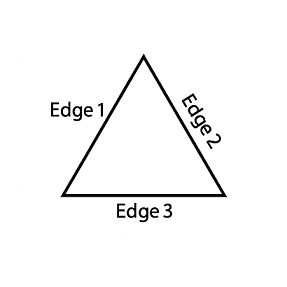Square Footage Calculator
The Square Footage Calculator online is an essential tool for homeowners, contractors, and designers. It simplifies measurements for house building, painting, and flooring, making projects more efficient and cost-effective.
The Square Footage Calculator online is an essential tool for homeowners, contractors, and designers. It simplifies measurements for house building, painting, and flooring, making projects more efficient and cost-effective.

While rectangular and L-shaped areas are common, many spaces in construction, landscaping, and design are triangular. From oddly shaped rooms and attic sections to triangular garden beds, roof gables, or even uniquely configured land parcels, knowing how to accurately determine the square footage of a triangle is an invaluable skill. Unlike rectangles, where a simple length times width suffices, calculating the area of a triangle often requires a more specialized approach, especially when you only know the lengths of its three sides.
This comprehensive guide will lead you through the robust method for calculating the square footage of any triangle when you have measurements for all three of its edges. You'll learn about a powerful mathematical tool called Heron's Formula, enabling you to tackle these non-standard shapes with confidence and precision.
At its most fundamental, the area of a triangle is often taught as $\frac{1}{2} \times \text{base} \times \text{height}$. This formula is simple and effective when you know the base and the corresponding perpendicular height. However, in many real-world scenarios – especially when measuring existing structures or plots of land – it's far easier to measure the lengths of the three sides (edges) than to accurately determine the perpendicular height. This is where Heron's Formula becomes your essential tool.
Just as with any other shape, precision in calculating the area of a triangle is critical for numerous practical applications:
Heron's Formula is an elegant and powerful way to calculate the area of a triangle when only the lengths of its three sides are known. It eliminates the need to find the height or any angles, making it incredibly practical for field measurements.
Let's define the terms:
The formula involves an intermediate step: calculating the semi-perimeter (s). The semi-perimeter is simply half the perimeter of the triangle.
Where:
To ensure accuracy, gather these tools:
Let's walk through the precise steps to apply Heron's Formula.
Clear any obstructions that might interfere with straight-line measurements along the edges of your triangular space. Ensure you have clear access to all three corners.
Carefully measure each of the three sides of your triangle.
Just like with rectangles, your measurements might not be perfect whole feet. You'll frequently encounter measurements that include inches (e.g., 10 feet 7 inches). To accurately calculate square footage, you must convert these inches into decimal equivalents of a foot.
Remember: 1 foot = 12 inches
To convert inches to a decimal of a foot, divide the number of inches by 12.
Examples:
So, if Edge 1 is 15 feet 6 inches, it becomes 15.5 feet. If Edge 2 is 10 feet 3 inches, it becomes 10.25 feet, and so on.
Now that you have your three edge lengths (a, b, c) all in feet, sum them up and divide by 2:
$$s = \frac{a + b + c}{2}$$Substitute the value of 's' and your edge lengths (a, b, c) into Heron's Formula:
$$A = \sqrt{s(s - a)(s - b)(s - c)}$$Perform the subtractions inside the parentheses first, then multiply all four terms together, and finally take the square root of the result.
Let's say you have a triangular section of your garden in Madurai that you want to cover with sod. You've measured the three sides:
First, convert inches to feet:
Step 1: Calculate the Semi-Perimeter (s)
$$s = \frac{20.0 + 15.5 + 18.25}{2}$$ $$s = \frac{53.75}{2}$$ $$s = 26.875 \text{ feet}$$Step 2: Apply Heron's Formula
Now calculate the terms inside the square root:
Multiply these terms together with 's':
$$A = \sqrt{26.875 \times 6.875 \times 11.375 \times 8.625}$$ $$A = \sqrt{18131.0234375}$$Finally, take the square root:
$$A \approx 134.65 \text{ sq ft}$$So, your triangular garden section has an area of approximately 134.65 square feet. When purchasing sod, you'd typically round up and add a waste factor (e.g., 5-10%).
Heron's Formula is particularly useful in situations where direct perpendicular height measurement is impractical or impossible:
While Heron's Formula is powerful, errors can arise if not handled carefully:
It's important to know when to use which formula:
Both formulas will yield the same accurate result if measurements are correct. Heron's Formula simply offers a practical solution for specific measurement challenges.
Many online square footage calculators exist that incorporate Heron's Formula. These tools can be very helpful for quick verification and to minimize manual calculation errors.
However, the core accuracy still depends on your careful, precise measurements of the three sides. An online calculator is a powerful aid, but your field measurements are the foundation.
Professionals in construction, architecture, and interior design often encounter even more complex scenarios: